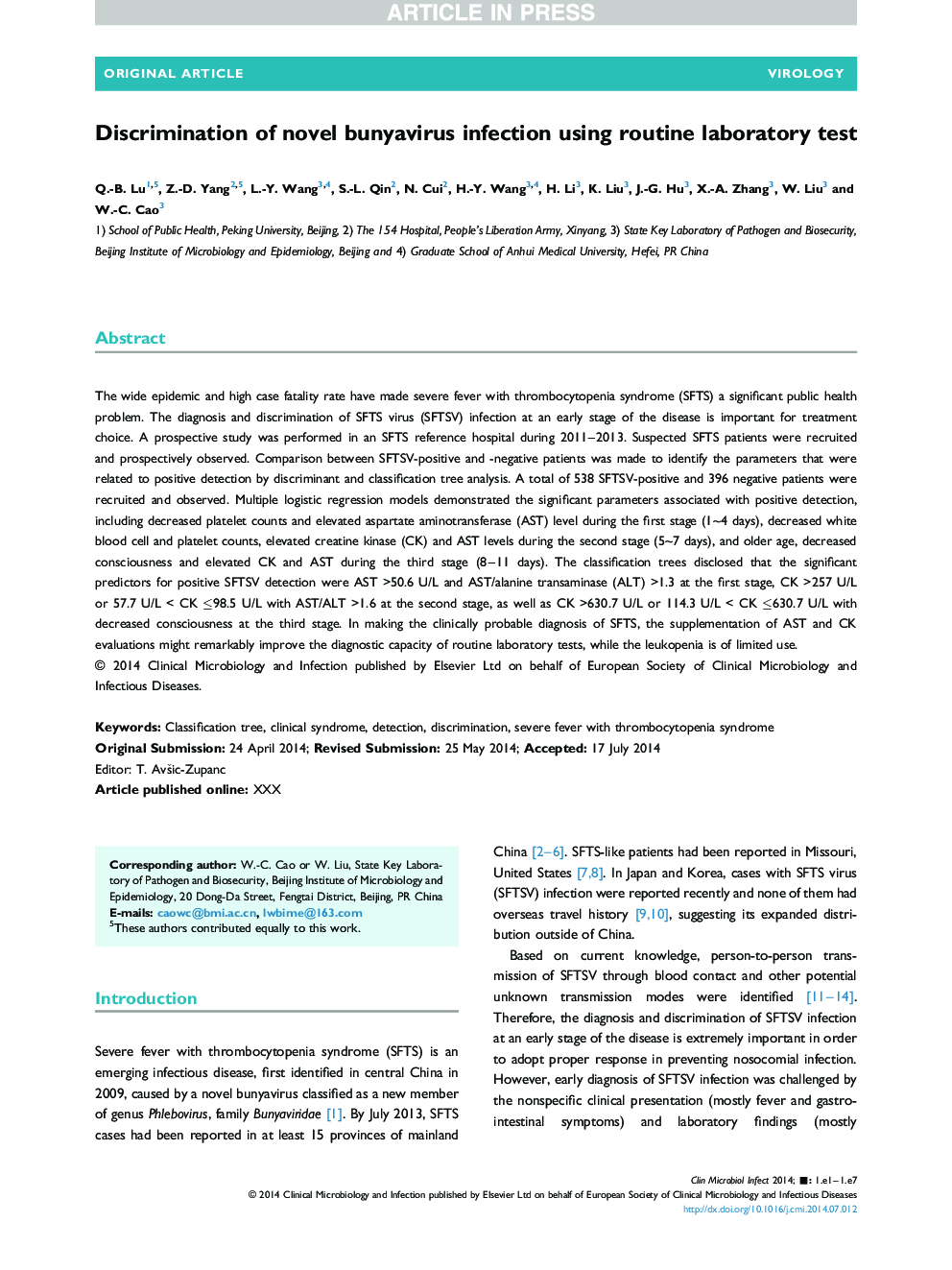| Article ID | Journal | Published Year | Pages | File Type |
|---|---|---|---|---|
| 6129753 | Clinical Microbiology and Infection | 2015 | 7 Pages |
Abstract
The wide epidemic and high case fatality rate have made severe fever with thrombocytopenia syndrome (SFTS) a significant public health problem. The diagnosis and discrimination of SFTS virus (SFTSV) infection at an early stage of the disease is important for treatment choice. A prospective study was performed in an SFTS reference hospital during 2011-2013. Suspected SFTS patients were recruited and prospectively observed. Comparison between SFTSV-positive and -negative patients was made to identify the parameters that were related to positive detection by discriminant and classification tree analysis. A total of 538 SFTSV-positive and 396 negative patients were recruited and observed. Multiple logistic regression models demonstrated the significant parameters associated with positive detection, including decreased platelet counts and elevated aspartate aminotransferase (AST) level during the first stage (1â¼4 days), decreased white blood cell and platelet counts, elevated creatine kinase (CK) and AST levels during the second stage (5â¼7 days), and older age, decreased consciousness and elevated CK and AST during the third stage (8-11 days). The classification trees disclosed that the significant predictors for positive SFTSV detection were AST >50.6 U/L and AST/alanine transaminase (ALT) >1.3 at the first stage, CK >257 U/L or 57.7 U/L < CK â¤98.5 U/L with AST/ALT >1.6 at the second stage, as well as CK >630.7 U/L or 114.3 U/L < CK â¤630.7 U/L with decreased consciousness at the third stage. In making the clinically probable diagnosis of SFTS, the supplementation of AST and CK evaluations might remarkably improve the diagnostic capacity of routine laboratory tests, while the leukopenia is of limited use.
Related Topics
Life Sciences
Immunology and Microbiology
Microbiology
Authors
Q.-B. Lu, Z.-D. Yang, L.-Y. Wang, S.-L. Qin, N. Cui, H.-Y. Wang, H. Li, K. Liu, J.-G. Hu, X.-A. Zhang, W. Liu, W.-C. Cao,
